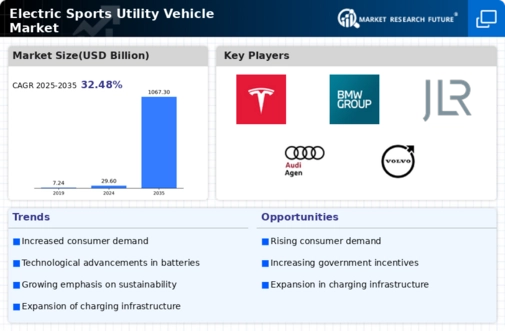The Electric Sports Utility vehicle market is primarily studied across four major regions, namely North America, Europe, Asia-Pacific, and the Rest of the World. Out of these, the Asia-Pacific region dominates the global market share owing to the government's initiatives to raise the manufacturing and sales of SUVs. The APAC region is dominated by China, which is considered to be one of the fastest-growing countries in the global automotive sector. Technologically advanced countries such as Japan and South Korea have also played key roles in the growth of the market in this region. Besides, developing countries such as India, Taiwan, and Malaysia provide a huge opportunity for further growth in these markets.
These are untapped markets, which is encouraging e-SUV OEMs to invest and establish themselves as strong players in the local market.
Followed by the Asia-Pacific region, the North American region has the second-highest revenue generation in the said market segment. The ATV/UTV sector in North America is highly sophisticated and accounts for over 50% of the global market for ATV/UTV vehicles. There has been a substantial increase in the market for electric ATVs/UTVs due to the growing popularity of recreational activities like camping, hunting, and forest rides, particularly during the winter. Polaris, Textron, and John Deere are the main companies that control the sales of electric ATVs/UTVs in the region.
These cars have experienced a significant rise in demand in the agricultural sector as the US government encourages farmers to transition to electric utility vehicles. John Deere is collaborating with the government to promote the adoption of electric utility vehicles in US farms.
The presence of a thriving e-commerce sector and a well-developed infrastructure for industrial and manufacturing enterprises, including their warehousing capacities, contribute to North America's appeal as a lucrative market for producers of industrial vehicles. Furthermore, the presence of a widespread third-party logistics (3PL) network has resulted in the expansion of the warehousing industry in North America.
















Leave a Comment